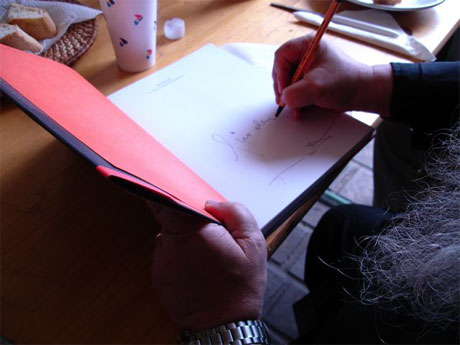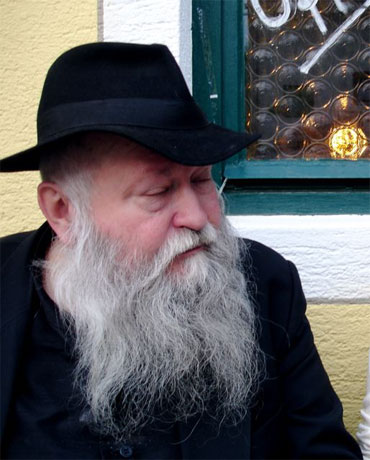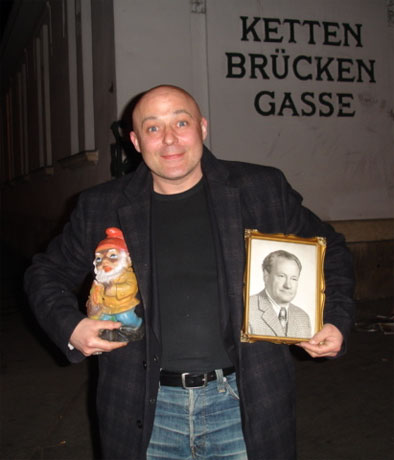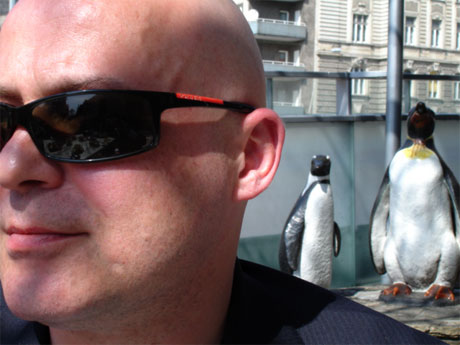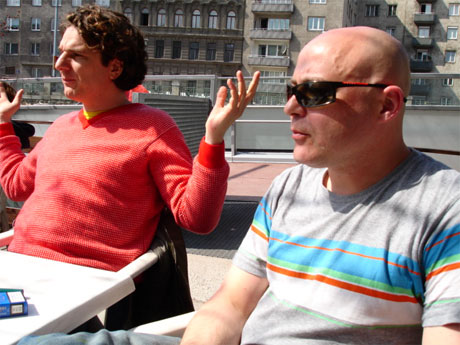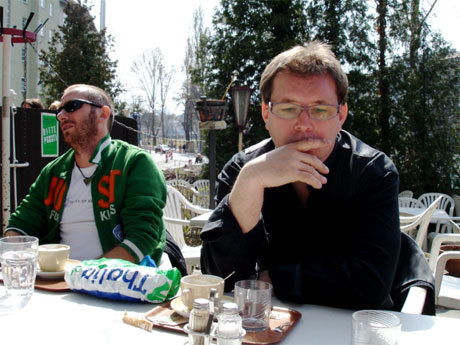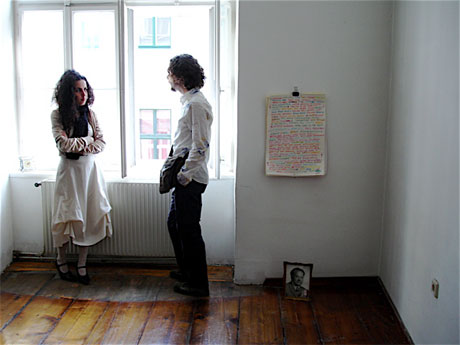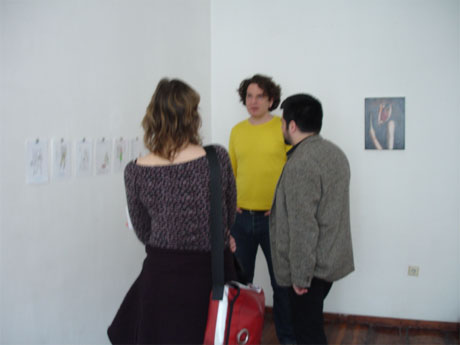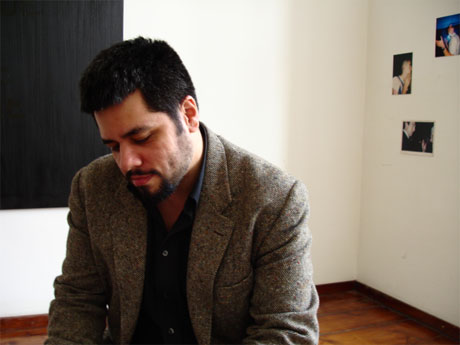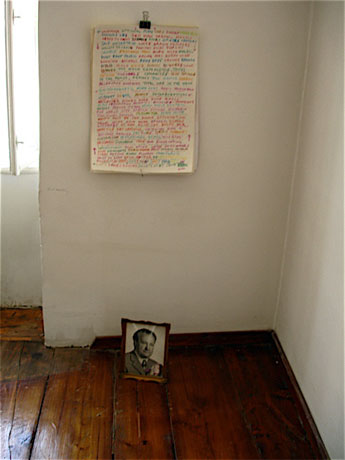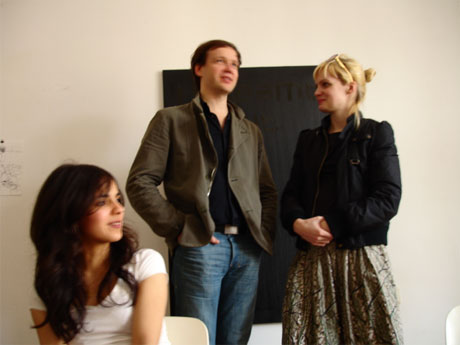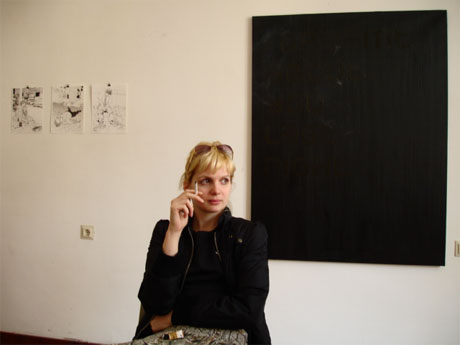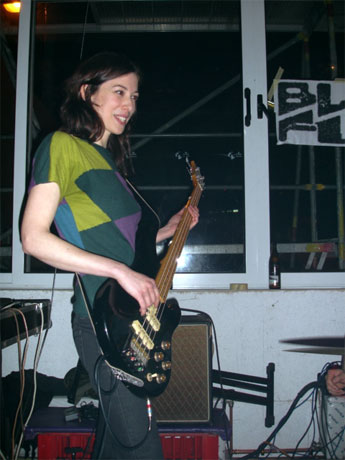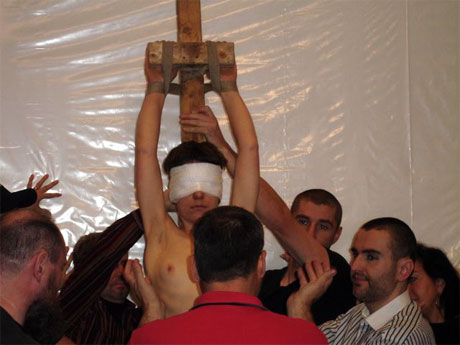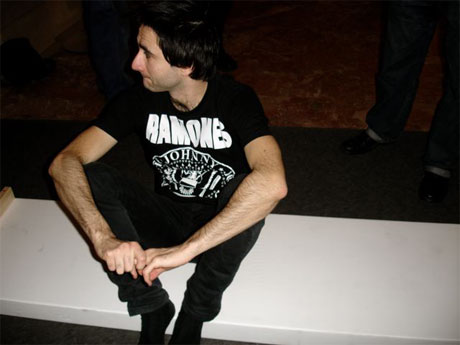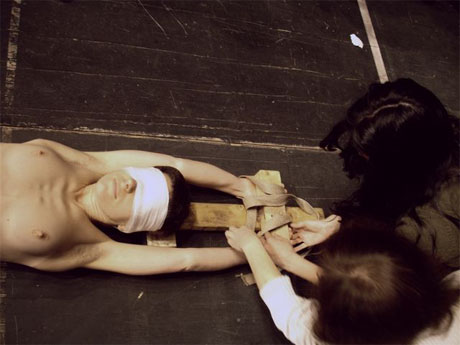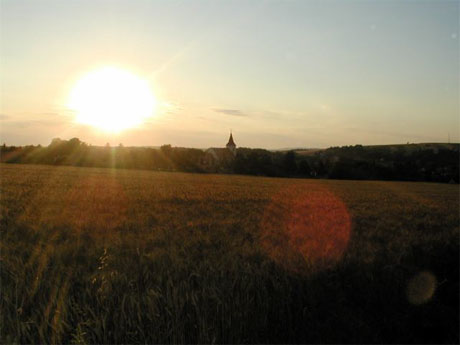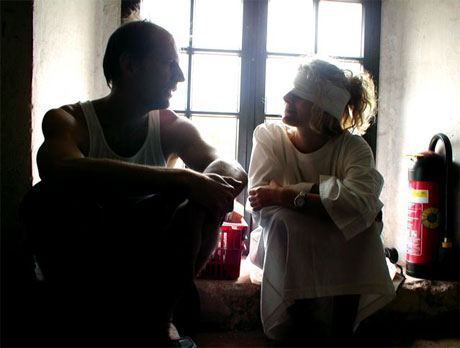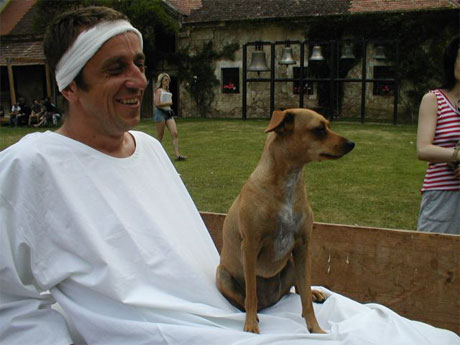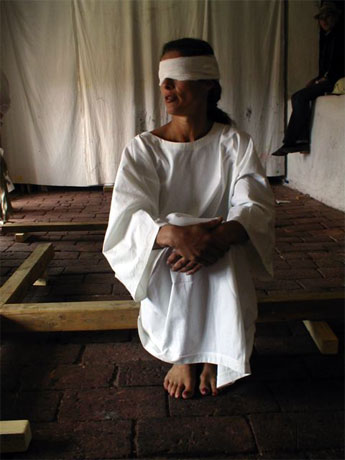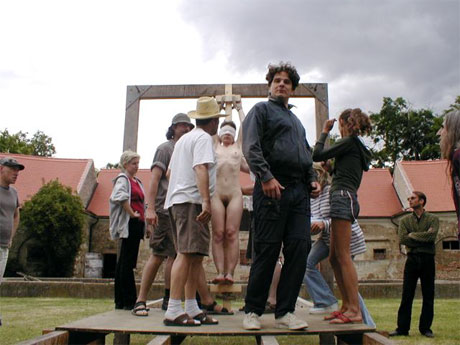Argggggghhh! Shit for brains! Yes, ‘You’! I mean ‘Me’. Why the fuck haven’t you finished Pete’s text you moron! Hey? Do you want me, I mean you, to kick (yourself) in the balls? No? Well, then, just write the bloody thing…
i can only talk to myself. because you cannot understand what I say just as I can’t understand what you say. I can extract something i can comprehend from the edge of your gabbling and guzzle it up you pig. i don’t want to speak to myself, you are the reason why I speak to myself… don’t stand there all ears you pig, have I allowed you to take even one coma from my talking so that you might patch together some sort of understanding? pig. ass, goat!’ konrad bayer, ‘idiot’ 1962.
So Vienna. Why Vienna? Austria? How come? Et cetera, etc. A ‘/seconds’ issue on ‘curating’, yes some of that too. So proceed, you lazy idiot!
My first contact with Vienna & Austria, as opposed to Austrian art/literature, that is, my first real contact, began in 1997. I was curator/programmer of live/interdisciplinary art at 30 Underwood St gallery, Shoreditch, London (1995-2001), and co-curated Hermann Nitsch’s first UK exhibition there, Nov 97-Feb 98. This project, like many, started off with a casual conversation over a beer. Atlas Press were putting together a publication/translation of Nitsch’s text, ‘the fall of jerusalem’, and I asked Alastair Brotchie if he thought Nitsch might consider showing at the gallery, with the opening also serving as the book launch? Malcolm Green, one of the triumvirates of Atlas Press and its Ger. translator, contacted Nitsch and we went on from there. We managed to get the necessary funding from the arts council and brought Nitsch over to see the gallery which he wanted to check out, took him to St John’s restaurant, which he of course loved, and then that summer travelled to Vienna, Linz, (where he had a museum show opening), then onto Prinzendorf Castle discuss the curation/choose the work.
That was the first trip/stay at Prinzendorf; my second was to the last three days of the 6-day play in 98, where, although not part of the rehearsals, took part on the 5th day – an absolutely incredible, mind-blowing piece of art/life/theatre – life changing, really. I have visited Prinzendorf and the Nitsch’s many times since, and taken part in the actions, the last being at the 122nd action at the Burgtheater in Nov 2005, and it is always an extremely positive experience, life-affirming, both in terms of life and, something that should not be compartmentalised here, in terms of art/culture.
S. …The Kantian Sublime [for instance] only leads to...the building up of the ego of the bourgeois subject; in your work obviously this is very different, it does the opposite, it de-structs the subject, and you have a new subject. A Dionysian-Sublime ?
N. At first it destructs the subject, but it builds up a new subject, and that's very important; because when people say to me, your work is full of destruction, and, you destroy the subject, that's not true...I destruct the normal, stupid subject; but the great subject, which is conformed with the cosmos and with spirit, that I make stronger, much stronger...
‘At the end you always have Being’, hermann nitsch & paul sakoilsky in conversation, 6-day play.1998.
I returned from Pfingstfest at Prinzendorf yesterday. Pfingstfest is on the 4th June. Nitsch has a tradition of having a large public party each year, which also showcases new work. Nitsch has written and said before, that’ ‘prinzendorf is the orgies mysteries theater’, it is that important to the work; “It is my Bayreuth, no architect could have designed it better.” The castle is a huge archive of his work, both video, paintings, graphics, books, papers, photographs, etc. The first foundation stone for a new Nitsch Museum has just been laid at Mistelbach, the nearest town to Prinzendorf, which will open next year.
I have written at length on Nitsch elsewhere, and won't repeat it here – sitting in Rudiger Hof, ‘our’ local, over several espressos to keep myself awake. Instead I shall quote a little from its conclusion. Nitsch’s star has continued to rise, and he is Austria’s most famous contemporary artist. At the first ‘triumph in painting show’, last year at Saatchi gallery, although Nitsch’s painting was represented in a big way, something that immediately caught my attention, (and something Nitsch also commented upon), was the lack of any true exposition, be it with video and/or photographs of the Orgies Mysteries Theatre and his/its concept/praxis of the gesamtkunstwerk (‘the total work of art’). While the paintings can stand by themselves, this is not the point, the point is, that everything within the Nitsch/OMT cannon, the painting included, is completely and utterly interrelated, philosophically/aesthetically, and, something that can too easily be lost sight of, experientially, existentially. To quote from the ’98 essay:
“In terms of the art-system, Nitsch's 'theatre' remains avant-garde. It resists the logic of consumption in terms of an art-market commodity, as it exists on purely existential terms. As already said, to truly understand this phenomenon, one has to be there, and in this being-there lies a subjective moment not readily transferable into discursive language. This existential experience resists commoditisation, while its extreme nature means that it resists re-appropriation into the culture industry; and its mythic and liturgical form, can be related to the latter in that it means that it also resists the usual normative socio-political analysis, e.g., marxist, liberal-humanitarian, neo-conservative, & co. If it can still deal in the essential themes of tragic drama, those of life, death, resurrection and redemption, it is because in its structure the truth that the will to religion survives the death of religion is revealed; e.g., the basic human need for authentic experience, whatever that actually entails in 'reality'.”
I Travelled from Budapest to go to the book presentation at the Burgtheater, Vienna, last month with my friend, the Hungarian translator, Lajos Adamik. He spoke about the ‘ersatz family’ of the OMT. This is in fact a vital point, and something pretty unique to Nitsch’s work, it’s collective nature, the sensus communis that it creates. In fact, many of my Austrian friends/colleagues/contacts, have arisen either directly or indirectly as a consequence of the curation of Nitsch and continuing participation in the Orgies Mysteries Theatre/Prinzendorf et al.
One of the most important of these, without doubt, was the meeting and befriending/working with, the great Austrian artist/filmmaker, Thomas draschan. We shall return to Thomas and Apt Draschan below. Apartment Draschan is always where I stay whenever I am in Vienna, a place that is simultaneously, continuously, an international guesthouse (for friends/colleagues), studio (art/film) and laughter factory. In early April Jamie Robinson and I travelled to Vienna, to curate the first of the touring ‘Carter Presents at…’ exhibitions, in collaboration with Thomas Draschan: ‘Carter Presents at Apt Draschan’ (Opened 9th April. 10th April-10th May). This first show was an experiment of sorts – the first time Jamie and I had worked (curating/hanging) together, and with Thomas – taking an exhibition on the road, etc. It showed, that with intelligence, a good curatorial eye/mind, the right people and limited budget, it is still possible to make headway. It was a big success, in its small way – and will travel to galleries in Frankfurt, Paris, Budapest, Berlin, and Amsterdam, as well as already leading onto other projects, sales, group and solo shows for some of the artists involved. We opened the show on the Sunday 2-7pm, with some good food and wine, and it turned into a kind of natural symposium, we then went onto Rudiger Hof, a fantastically rundown, décor untouched, late fifties restaurant near the Apartment.
The hanging of the show coincided with ‘Viennaffair’, the Vienna Art Fair 6-9th April.
I travelled a day ahead of Jamie, on the 5th, and so was able to attend the fair’s opening, and although we were too busy hanging the show to return to the fair itself, we did get to go to the nightly satellite events, music/video/parties/magazine launches, – also visiting some galleries after our show opened.
One of the most obvious differences between London and Vienna is one of scale. London is a huge, multicultural, sprawling city, a colossus – with all the attendant cons and pros that this entails. How many London-based artists, gallerists, curators and people related to the arts, are there? How big is the London art scene in cold hard figures? I mean, I sometimes joke to people, concerning this, that, ‘One only has to spit at random in Hackney/Shoreditch and one will hit at least a dozen artists.’ Vienna on the other hand, is provincial in comparison. Speaking with a friend there last night, he reckoned the Vienna art world to perhaps only include 300 people or so? (I’m sure it must be large than this?). And yet, for its size it has a very active, interesting art scene with international artists/shows, and spaces; the excellent museum quarter: MUMOK, Leopald Museum, Kunsthalle, Kunsthalle Project Space, etc., international galleries such as Krinzinger Gallery/Krinzinger Project Space, Georg Kargl Gallery, Charim Gallery, etc., and ‘Offspaces’ such as gallerie kunstbeuro gallery/Kunsthalle 8, (with its next door, co-owned artists’ bar, the Futur Garten –this is not properly an ‘Offspace’, having broken important artists such as Gelatin etc etc ), Area53/Framebox53, Plattform-raum für kunst (which also houses, next door, the important Hauer-Fruhmann Collection Archive). Note. This list is in no way meant to be exhaustive or exclusive – I’m typing fast, off the top of my head.
There are historical reasons for the strength of Austrian/Viennese art/letters and its art scene. London is basically composed of countless villages and towns that have grown into one another due to exponential urbanization and laisser fare capitalism. Instead of one centre, it has many centres, plural, depending on what part of town you’re in, indeed what kind of profession/’scene’ plus what part of town you are in. For all London’s violence, noise, pollution and the fact that it is has become so ridiculously expensive, it is still an exciting place to be with a lot of energy. It is London after all. The art scene here is now a vital component of the international art world, with many people ‘in the know’ telling you that it is now only second to New York in importance. Re. visual arts, this is a very new thing for London/Britain. If its new status definitively started to take shape in the early 90’s as a consequence of what went on in Shoreditch and the East End; whatever one’s attitude towards today’s art fairs, it is the development of the Frieze/Zoo art fair, that has sealed London’s new status. Notwithstanding this, London is an extremely tough city to live and work in, with the exponential rise in the cost of living, turning it into a neurotic city.
Vienna on the other hand, can truly be said to have a centre, say, around the 1st and 5th districts, where the art world is concentrated. It is very easy to get around, the standard of living is much higher on average, and it is importantly much cheaper to live there, and to live well – a much easier place for an artist to be able to live, have a decent apartment/studio, and therefore, an easier place to work. And one thing I do admire about the Viennese/Austrian ‘scene’, is that generally, it seems much more interested in the work, than in personalities. The work comes first, the personalities, albeit often extremely important, come second. There are pros and cons, to both cities and ‘scenes’ (what a horrible word!).
It seems to me that one of the biggest differences between British and Austrian art/culture (art/letters/thinking) is the historical one – one that still has serious ramifications. And this is the strength and influence of modernism/avant-garde, of what Alastair Brotchie has labelled the ‘anti-tradition’, in Austria as opposed to the reception/history of the avant-garde in Britain. Of course, this is a historical truism, a generality – one for which one may find British exceptions, but these were in the main, Vorticism, excepted, isolated cases, isolated individuals, at least up until the late 50’s/60’s (cf. Jeff Nuttal’s ‘Bomb Culture’). Britain’s most important contribution, up until relatively recent times, has come form ‘pop’ culture, for instance, that of Punk.
It is a fact that Austria has been peculiarly rich in terms of its avant-garde, and often, in extreme/distinctly ‘experimental’ forms, something that certainly sets it apart form the UK, in which modernism, and especially its avant-garde expression historically found little favour, in fact, had a good many enemies as being un-English, un-British or some such, especially after the 1930’s. The truth of this is not confined to the visual arts. One need only look at the history of 20th century philosophy in this country, the anglo-analytic school vs. the so often disparaged ‘continental’ philosophy. Certainly after the Puritan Revolutions and the destruction of British visual culture, British culture, again, until very recent times, centred itself on the Word, Literature. One need only consider the huge disparity between British literature in terms of modernist/avant-garde praxis and its reception, and the same in Austria (and on the continent and even, America, in general). Of course, again, with some, generally isolated exceptions, (and its no accident that they ran off to Europe and/or the States).
Even off the top of one’s head, a (non-chronological) list of internationally known, Austrian art/literature, shows a different tale: Expressionism, Shiele, Kokoschka; Arnulf Rainer, the Vienna Group, Thomas Bernhardt, the Vienna Actionists (of course, one thinks especially of the four primary figures: Gunter Brus, Hermann Nitsch, Otto Mühl, Schwarzkoegler – but one should also check out painters linked with the group, such as Alfons Schillings’ spin paintings), and related artists such as Valie Export, the filmmakers Peter Kubelka and Kurt Kren, the artist/photographer Heinz Cibulka, etc; the more contemporary/younger artists, such the works of Gelatin, the films/collages of Thomas Draschan. This is not meant to be an exhaustive or exclusive list. All I suggest come out of a particular aesthetic-cultural-historical and political environment, to risk tautology: out of Austria/Vienna.
In the introduction to Black Letters Unleashed: 300 Years of enthused German Writing', Atlas Press 1989, Malcolm Green cites Gustav René Hocke’s concept of Mannerist art, as a binding factor of the writers included in the anthology. And what is said of the writers in this anthology could certainly be said of the particular strand and internationally important strand of Austrian art/letters, and its reception-base, I am hinting at here.
'Hocke extends the traditional meaning of mannerism (the artistic epoch between 1520-1620) to that of an expressive style and disposition extending from antique Hellenic "Asiaticism", via the occult Ars Combinatoria, the Baroque writers, the Romantics, to the moderns. He claims that this is a recurring, anti-classical and anti-naturalistic "constant" in European intellectual history... Hocke describes the basic traits of Mannerist art as: 'artistic nurturing of logistic acumen and demonic-vital expressive drive: painstaking, often far too painstaking intellectual search and nervous frenzy in metaphoric chains of associations, calculation and hallucination; subjectivity and opportunism with regard to (anti-classical) conventions; delicate beauty and frightening strangeness; drug-like fascination and almost prayer-like evocation; a tendency to stagger and amaze and a relaxed receptiveness to dreams, idyllic chastity and brutal sexuality, grotesque superstition and pious devotedness..."'
An exemplar of this difference in terms of reception of its avant-garde, its extreme manifestations, would be the staging in November last year of Nitsch’s 122nd action at the Burgtheater, in which I participated.
The Burgtheater (Eng. Castle/Imperial Court Theatre), is the Federal State theatre of Austria, one of the most important German language theatres in the world and without doubt, one of country’s major cultural icons. So, Nitsch, re-enacting the primal excess situation, blood, naked bodies, animal carcasses, etc., etc., at the Burgtheater! When this was this originally discussed, none of ‘us’, really thought it would actually happen, that without doubt the Austrian politics would intervene and stop the show. But it went ahead, due to the current director, Klaus Bachler. It should be recalled, that only in 2004, Nitsch was due to make the scenography/design for Wagner’s Parsifal at the Vienna Opera, but when it actually came to it, the director, “kicked me out.” And then of course, there is the fact, that during the 60’s Nitsch and fellow actionists were imprisoned because of their work, and in 1970 had to skip the country for Germany, Mühl and Nitsch, to escape 6 month sentences. And this is a strange factor – culturally Austria seems riven with contradictions and dichotomies, whereas its art and culture has been and continues to often take extreme, interesting and challenging forms and expression, and gains support, its general culture is still, extremely conservative, bourgeois, right-wing and Catholic. Also, unlike Germany, (apart from its artists/writers/thinkers), in the public arena, it has still not squarely faced its part in the Holocaust and the Third Reich, for instance, it was not until the 1989 outing of Kurt Waldheim, I am reliably informed, that the Austrian (wholehearted) part in this history was even raised in a serious public, (i.e. mass media etc.,) debate. This is no doubt an important influence in the extremity of much Austrian Art/Literature. This is especially evident in the work of the actionists, for instance, the photo and other documentation of their first public action-work, die bloodorgel, ‘the blood organ’ in Vienna in 1962. Again, the dichotomy reveals itself in the fact that not only was Nitsch accepted at he Burgtheater, but that he simultaneously received the verleihung österreichischer staatspreis, the most important/prestigious State award for the arts.
The Burgtheater performance itself, lasted for 9 hours, and utilized for the first time in the theatre’s history, the whole building, both inside and outside. This, as far as I know, is the first time the OMT has ever been performed on a stage, let alone such a stage. The difference in the setting affected the action in a very direct way. In Prinzendorf, the images and reality of death and destruction are juxtaposed, continuously, effortlessly, against, or rather within, the setting of abundant life: nature, livestock, Nitsch’s many geese, peacocks, chickens, etc., and the constant celebration of life taking place, the festspiel – eating, drinking, intermingling of the many, many guests and actors. At the Burgtheater, ‘nature’ (in the forgoing sense) was absent. Here, it seemed to me, the gesamtkunstwerk, seemed to be much more focused on death than life. Many people have spoken about the development of Nitsch’s music, something that was certainly noticeable again, at 2004’s 2-day play; here, in collaboration with his conductor and musical collaborator, Andrea Cusumano, the music reached new heights of beauty and complexity, and was really, quite simply, an incredible thing. It was also, so completely full of life, to the point where it somehow counterbalanced the aforementioned lack, re. ‘life-nature’. The exceedingly odd, fascinating spectacle of Austria’s haute-bourgeois, wealthy theatre and art-crowd & co., traipsing around the stage in all the finery, amongst all the blood, naked bodies, carcasses and stench, etc., was a great sight/experience. Opposite the Burgtheater main entrance – Vienna's largest Xmas fair was on. Near the end of the action we carried the bull and four people, included the passive actor on a cross on the so-called stier-trager (huge platform) – an almost impossible weight.. the onlookers faces… the trams… The freezing cold… the finale scrum… standing there laughing, happy, covered in blood etc..... and incredibly, even the people upon the top balcony in the cheap seats – who only got to watch as it were, all stayed through the entire 9 hours.
Afterwards ‘we’ all went to a Gina’s an Italian-Rumanian restaurant near the Burgtheater to celebrate – eating and drinking, etc. till 5 in the morning, when I said goodbye to Nitsch and made a happy drunk way back to Apt Draschan.
2005.
Julius Hummel Gallery – a great selection from his huge collection focusing on body art, and vienna actionism & related works/artists – this was a great, great show, with small works and photographs, including a great photo of Duchamp at a chess board opposite a naked woman. Filling almost very available bit of wall space – a kind of crazy salon show – totally fitting to its subject and inspiring. {
‘Brussels south airport’ - may - July 2005, at Krinzinger Project Space, also a great show.
Krinzinger Project Space, exists in a very large, old renovated factory, and is where younger artists and/or group shows are staged.
2006.
Viennaffair – Vienna Art Fair. I only saw a tiny fraction of this, as I could only make the opening in the evening, after which I was too busy hanging the ‘Carter Presents at...’ show. This year the fair was given over to Central and Eastern European Art/Galleries, with only two London galleries in attendance. As it was the opening, and I seem to know quite a few people in Vienna, my time was mainly taken up with socializing, drinking, talking. As ever, one goes to the places one knows, especially, when one has no time. Krinzinger, Charim and Georg Kargl galleries. Generally I think the choice of delimiting the art fair along geographical/political borders, esp. considering the current internationalism of the art world, was a bit of a strange and not a necessary productive choice. Still, I had a good night, ending up at the party at the Kunsthalle Wien Project Space: ‘art sessions – video –performance – experimental music’; although on subsequent nights the music was a little better, I was not particularly impressed. Although there were some good video, including Thomas Draschan’s video-piece made for the New Order song, ‘Turn’.
Two new magazines launches, 6th April, one in Mumok, a very chic/expensive affair, and another on the same night at the Kunsthalle Project Space, nice parties, shame about the magazines, which were utterly pointless.
Two simultaneously shows at Charim Gallery: Anatoly Shuravlev "Infrathin" and Mladen Bizumic "The Crystal Memorial". The latter, a video piece reworking a Goddard film, was kind of beautifully elegiac, strange, haunting.
Ken Kagami: Hellowien, at the Krinzinger Project Space. Although, at first, brief glance, some of this large show, was entertaining, comprising of readymades, kids’ toys, stuffed cuddly toys, schlock horror objects/toys-masks, etc., and some drawings, in various combinations, it was just all too easy. One could see where he was coming from, manga, Duchamp (readymades – without the grandmaster’s asceticism), McCarthy et al, but without any kind of rigor, and without any interesting intervention of any kind, it was flat, kind of absurd. The artist handed me a brown chocolate/coconut bar in the shape of a turd in a clear plastic bag when I walked in, it’s in the spare kitchen drawer somewhere now. The only bad show I’ve seen there, while in Vienna so far. ‘Genuine Happiness’, at the Kunstbeuro/Kunsthalle 8 - a good group show. Then there was a really enjoyable party at a Mumok site a little out of the centre, where we partied till the wee hours, and where a pretty decent Austrian art band (I guess) kind of noise/indie rock or something, called ‘Black Flash’ were playing. The dj-ing for the most part was also good, one suddenly felt a little more at home, and then one realized that there is a big divide between the UK and Austria in terms of ‘popular’ music/culture. Certainly, baring Philip Quehenberger at the Vienna Art Fair, they were the only decent live/contemporary music I saw/heard while there, (there were nightly music performances at the Kunsthalle Project Space to coincide with the Fair, but all were pretty bad). They sounded a little like the Fall, without Mark E Smith’s lyrical snarling genius of course; but with a great drum and bass player – the latter, being not only a great bassist but also a very sexy young woman, of course held people’s attention. What else? Oh yes, after the Burgtheater book launch, I went to see Kurt Kren (1929-1998) mono-show at Atelier Autgarten entitled, ‘Uneasiness on Film, which was a seriously great exhibition of stills, archive materials, Kren’s box pieces, photographs and film, and what film!
Ah, shit! I’ve written far too much and what nonsense! Oh well, I’m signing out, and ordering another espresso before I crash.
